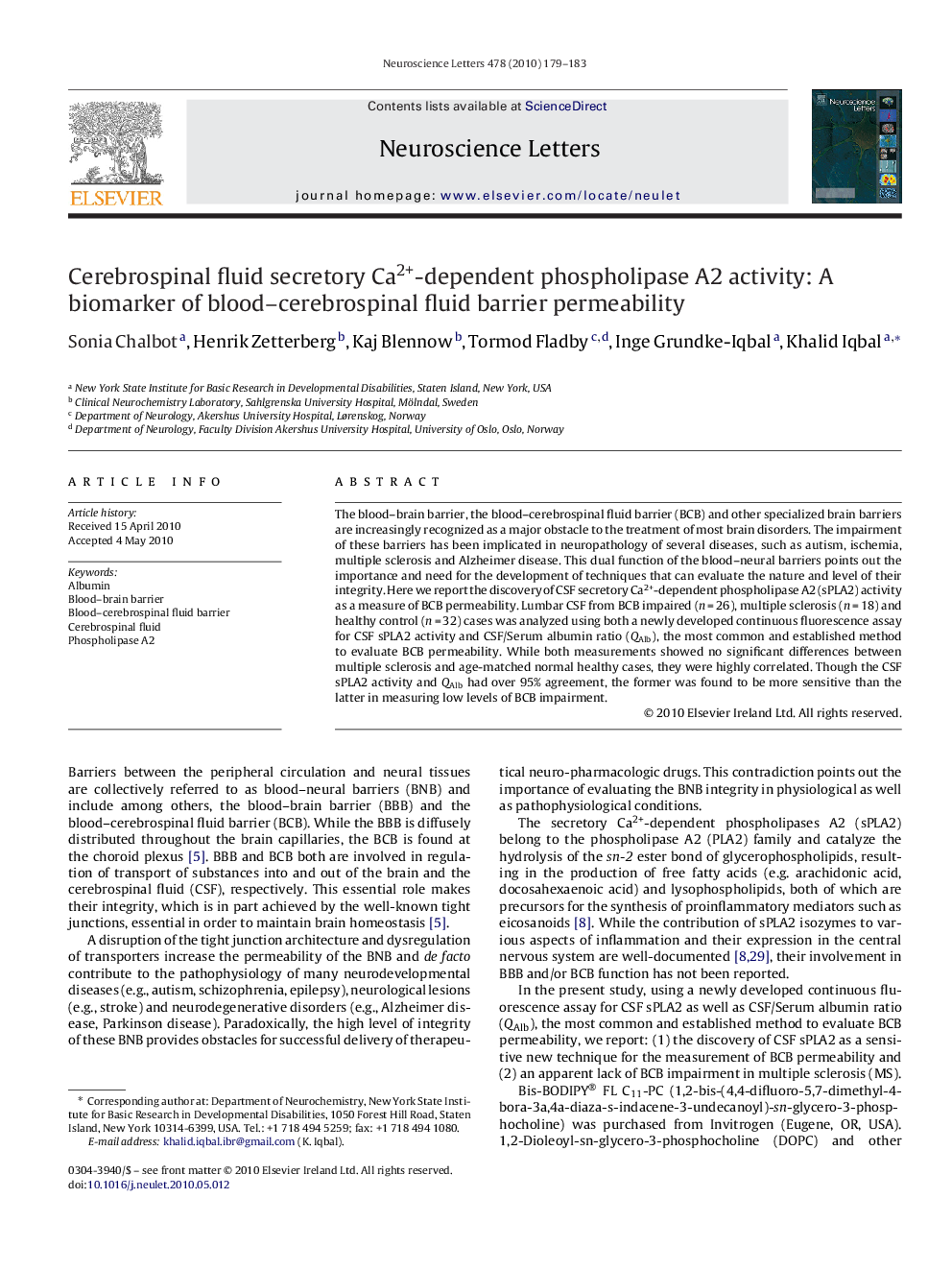| Article ID | Journal | Published Year | Pages | File Type |
|---|---|---|---|---|
| 4346118 | Neuroscience Letters | 2010 | 5 Pages |
Abstract
The blood-brain barrier, the blood-cerebrospinal fluid barrier (BCB) and other specialized brain barriers are increasingly recognized as a major obstacle to the treatment of most brain disorders. The impairment of these barriers has been implicated in neuropathology of several diseases, such as autism, ischemia, multiple sclerosis and Alzheimer disease. This dual function of the blood-neural barriers points out the importance and need for the development of techniques that can evaluate the nature and level of their integrity. Here we report the discovery of CSF secretory Ca2+-dependent phospholipase A2 (sPLA2) activity as a measure of BCB permeability. Lumbar CSF from BCB impaired (n = 26), multiple sclerosis (n = 18) and healthy control (n = 32) cases was analyzed using both a newly developed continuous fluorescence assay for CSF sPLA2 activity and CSF/Serum albumin ratio (QAlb), the most common and established method to evaluate BCB permeability. While both measurements showed no significant differences between multiple sclerosis and age-matched normal healthy cases, they were highly correlated. Though the CSF sPLA2 activity and QAlb had over 95% agreement, the former was found to be more sensitive than the latter in measuring low levels of BCB impairment.
Keywords
Related Topics
Life Sciences
Neuroscience
Neuroscience (General)
Authors
Sonia Chalbot, Henrik Zetterberg, Kaj Blennow, Tormod Fladby, Inge Grundke-Iqbal, Khalid Iqbal,
